Black-capped Chickadee and Nuthatches Nest Box
Black-capped Chickadee and Nuthatches Nest Box
Couldn't load pickup availability

Near large mature trees in mixed forest.
Hole facing an open area.
Height of 2 to 5 meters.

Mixed or coniferous forests
Border of forests, small wooded areas,
Combination of trees and open space
Town and country house
Height 1.5 to 3 meters


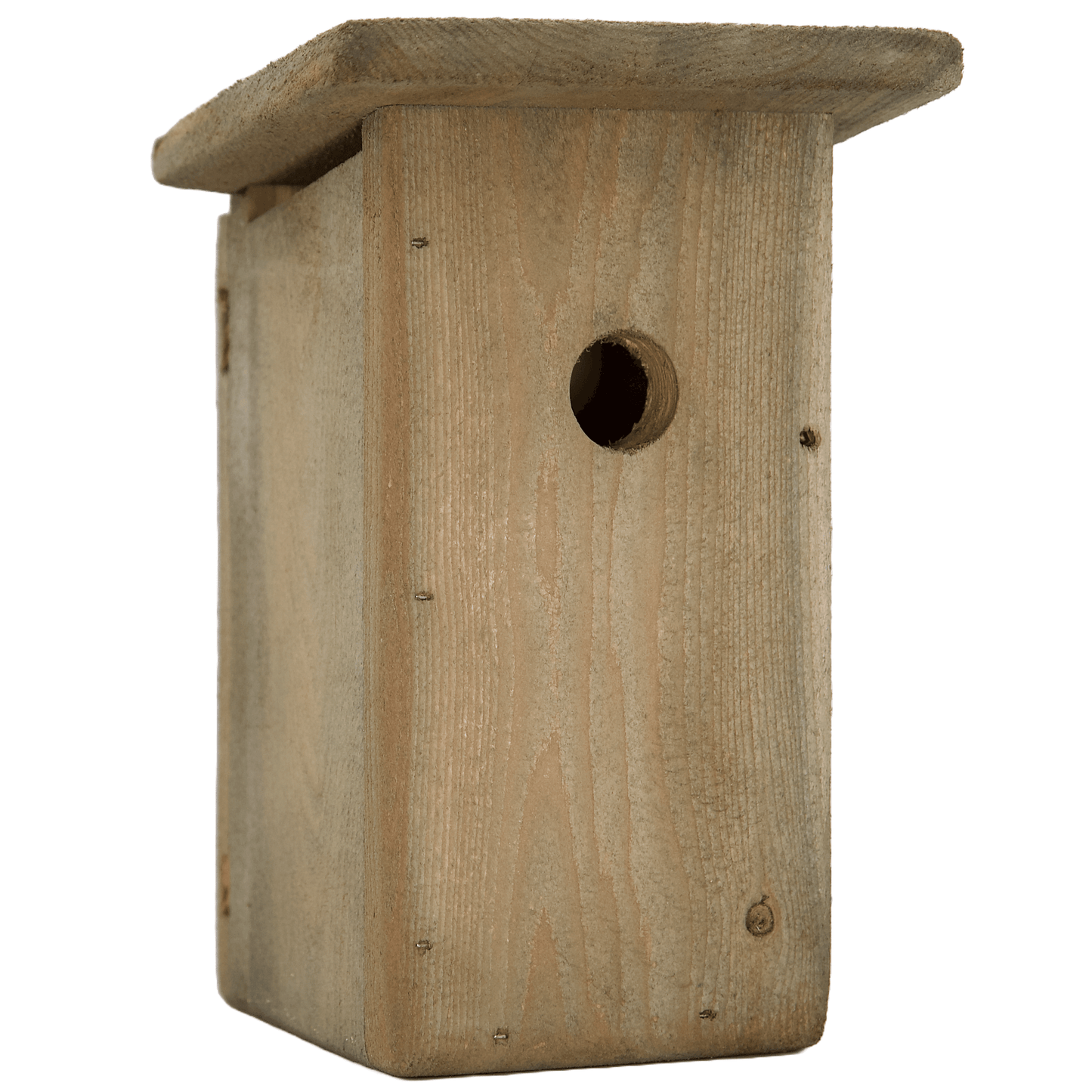

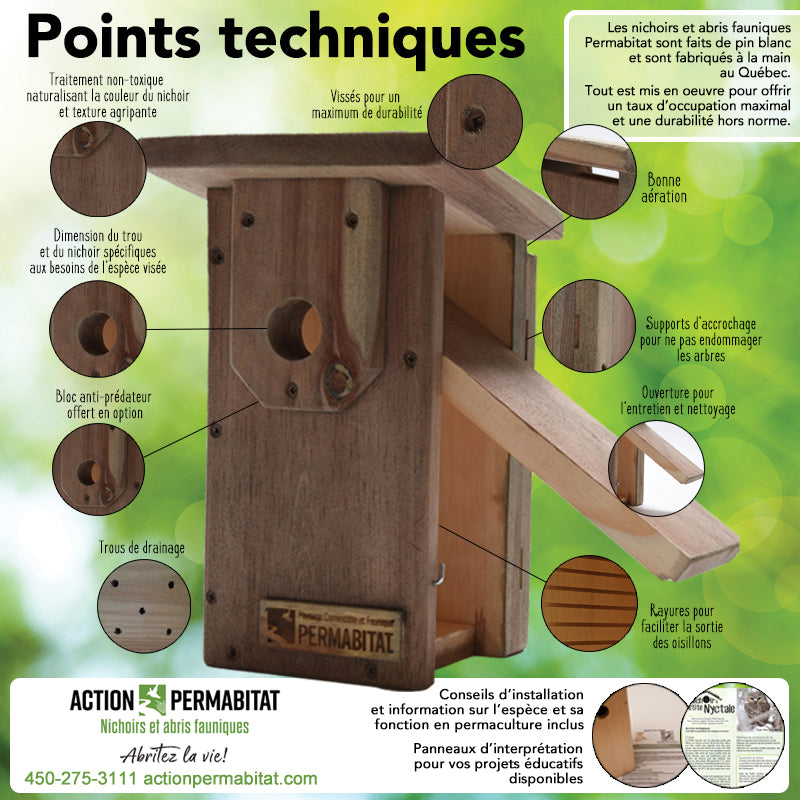
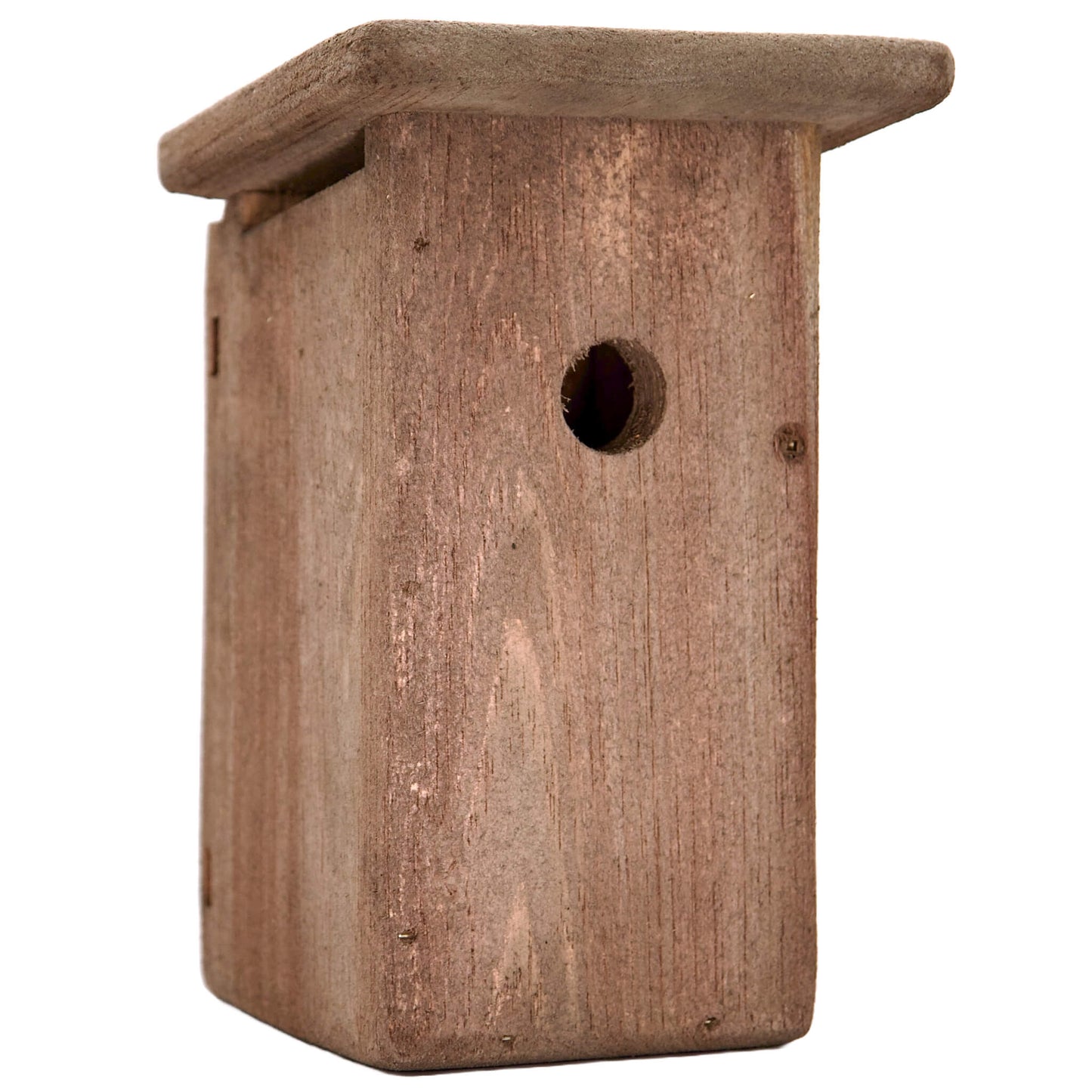
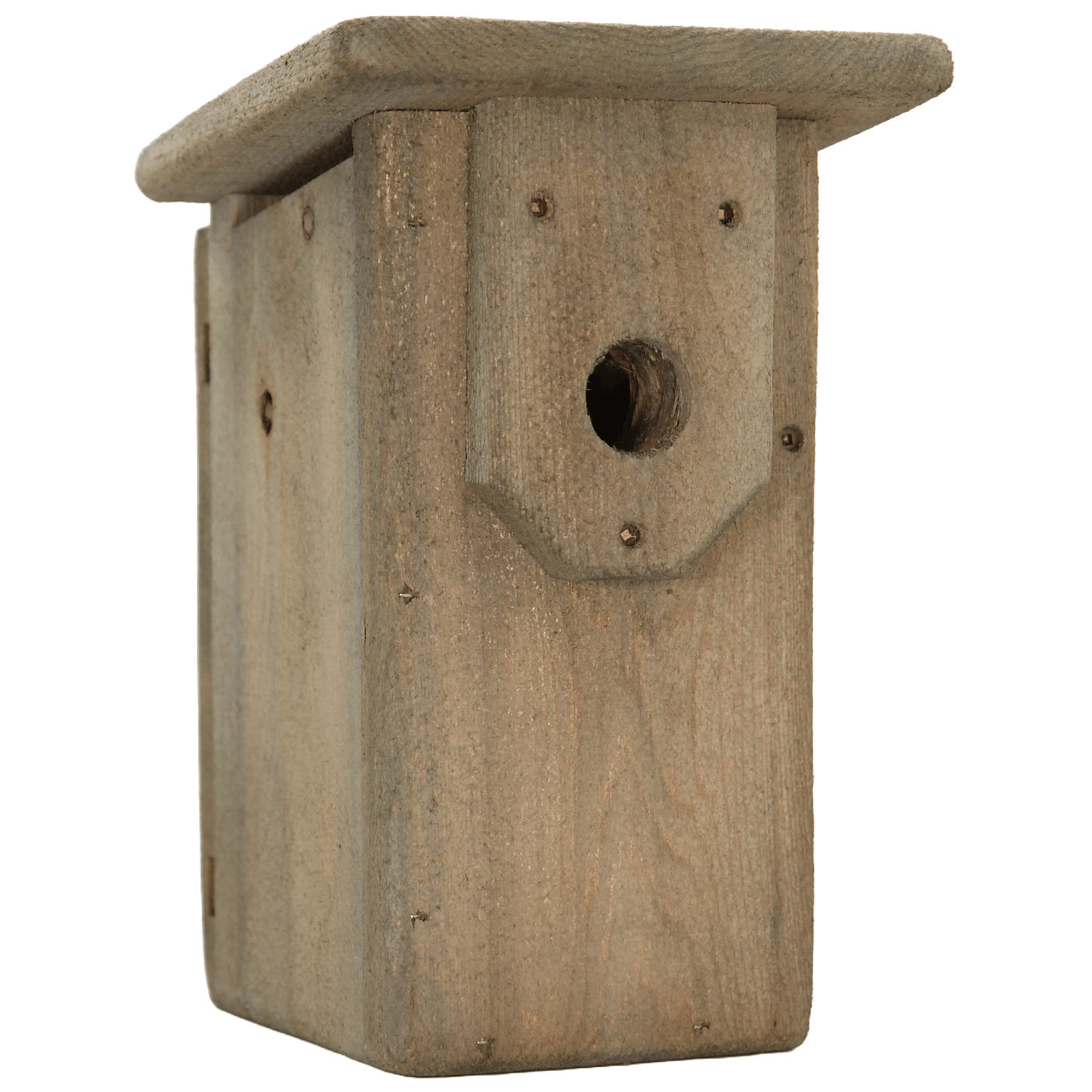

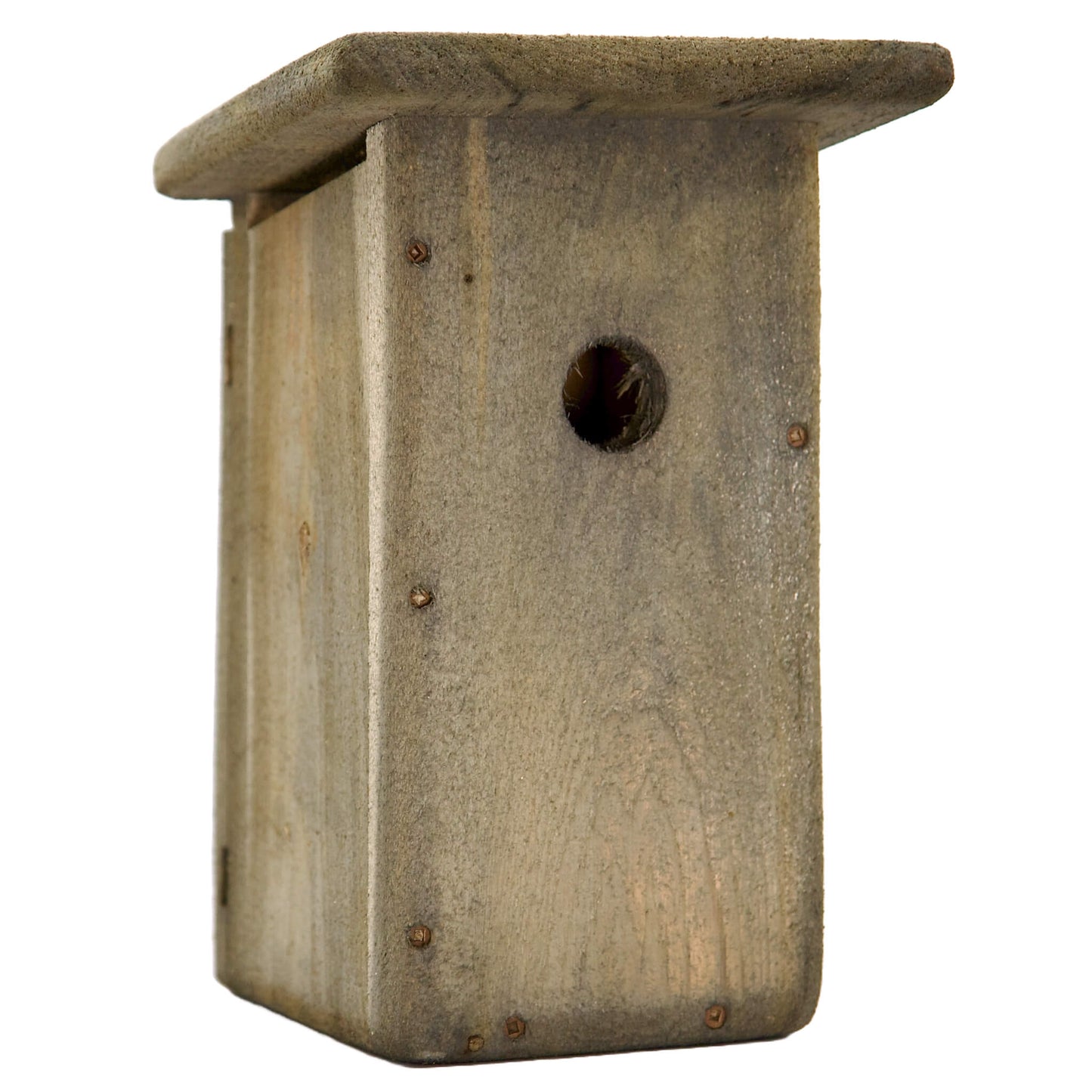
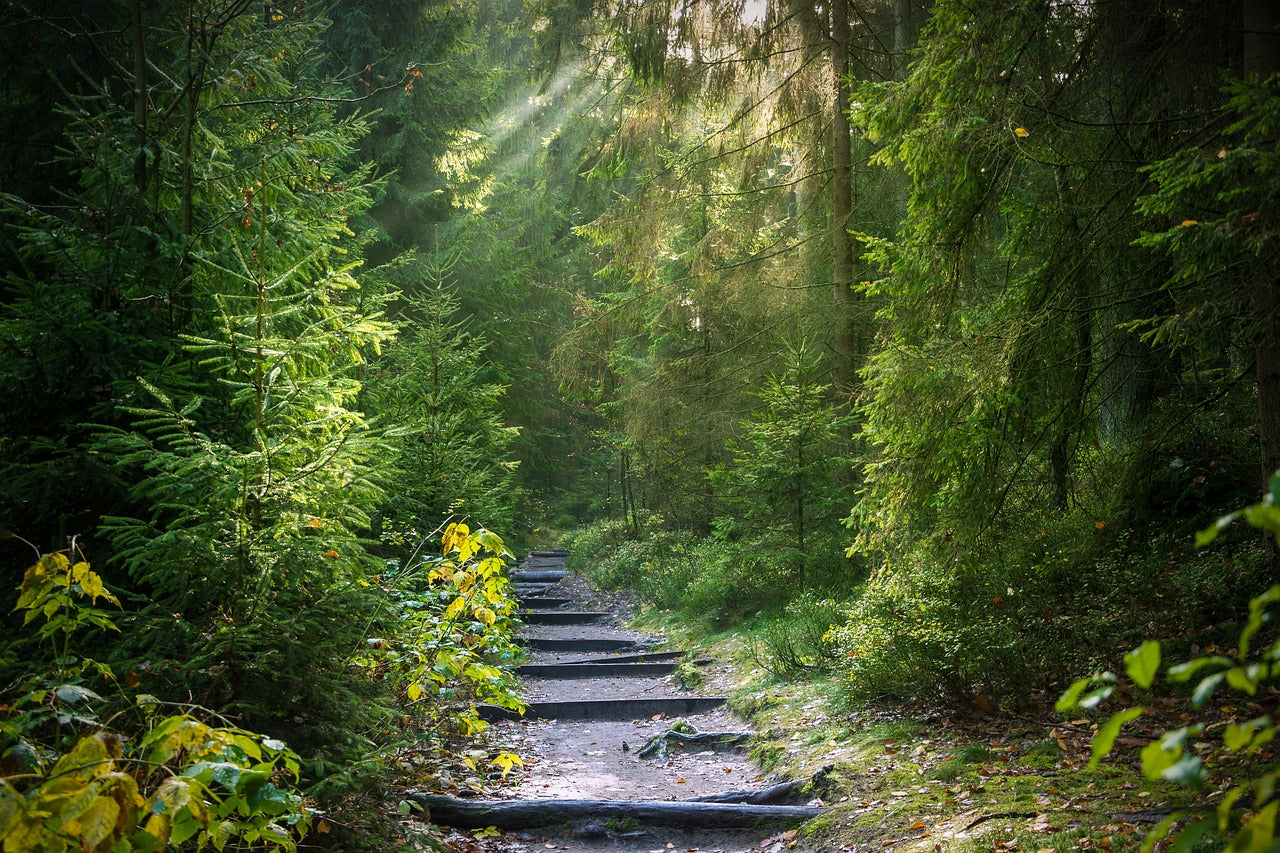
Traitement non toxique et 100 % écologique
Nichoirs et nature en harmonie pour le respect de l’environnement
Notre traitement donne au bois une couleur naturelle attrayante pour les oiseaux, améliorant considérablement le taux de réussite de nos nichoirs. En plus d’augmenter la durabilité du bois, il assure que les oiseaux ne sont pas exposés à des produits chimiques nocifs. Composé de minéraux naturels, il est sans solvants ni résidus nocifs, garantissant sa sécurité pour l’environnement.
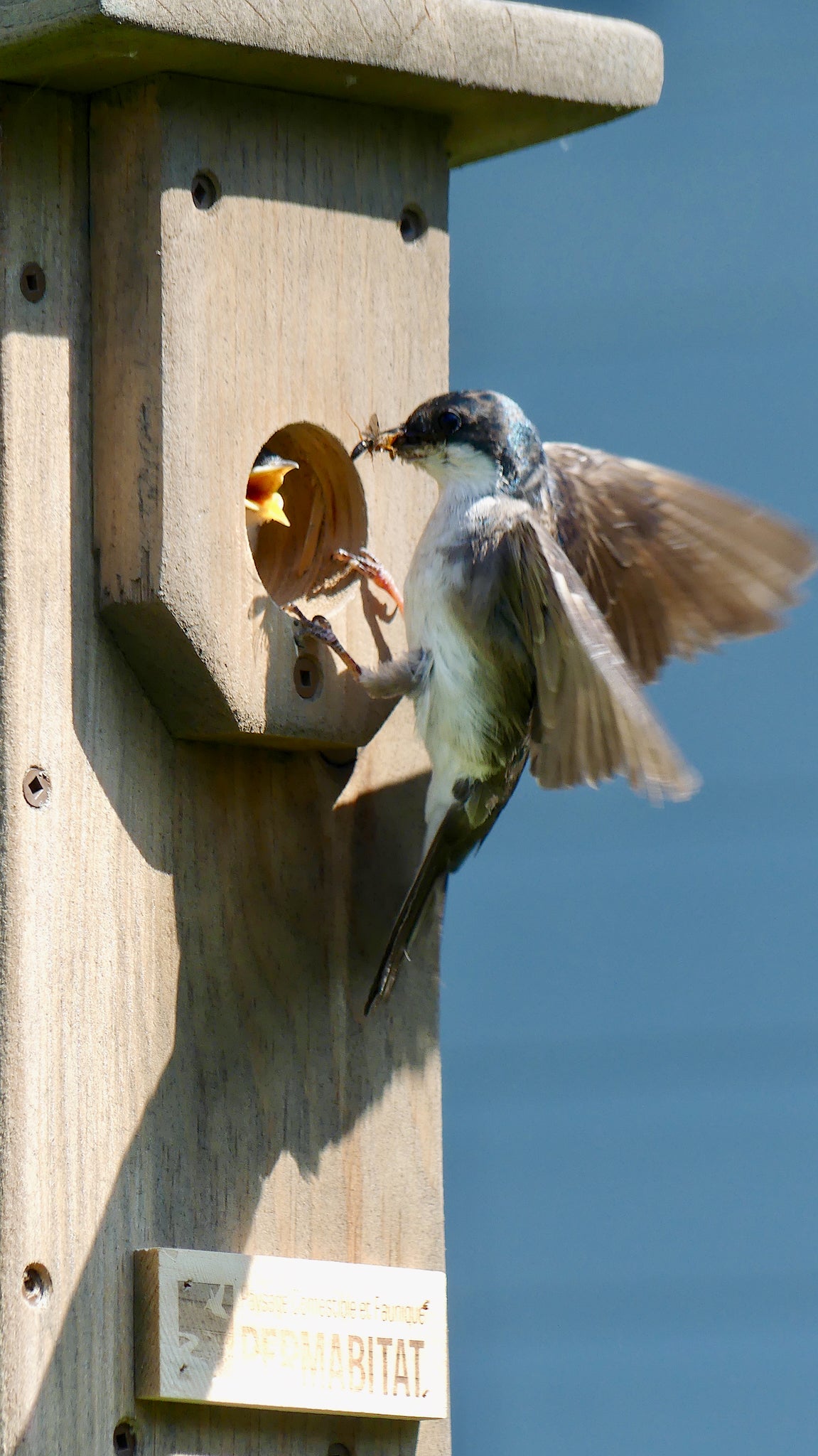
Les passériformes, ces petits oiseaux chanteurs, jouent un rôle écologique crucial que l'on sous-estime souvent.
LES GARDIENS DE NOS CULTURES
Les passereaux se régalent d'insectes, agissant comme un insecticide naturel. En se nourrissant de mouches, moustiques, chenilles, coléoptères et autres nuisibles, ils protègent ainsi nos cultures et jardins.
DES MESSAGERS DE POLLEN
Certains passereaux, comme ceux qui mangent du nectar, aident à polliniser les plantes.
LES JARDINIERS DE LA FORÊT
Les passereaux mangent des fruits et des baies, aidant ainsi à disperser les graines. Ils aident à régénérer les forêts et à propager de nombreuses espèces végétales.
ENRICHISSEMENT NATUREL
Leurs excréments, riches en nutriments, jouent un rôle dans l'enrichissement des sols.
LES SENTINELLES DE LA NATURE
Une baisse soudaine de leur nombre peut indiquer des problèmes environnementaux comme la pollution ou la destruction d'habitats, alertant ainsi les chercheurs et écologistes
MAILLONS ESSENTIELS
En tant que prédateurs et proies, les passereaux sont des maillons essentiels des chaînes alimentaires. Ils régulent les populations de leurs proies et fournissent de la nourriture à de nombreux prédateurs, contribuant ainsi à un écosystème équilibré et diversifié.
Les passereaux méritent notre admiration et notre attention. Alors, la prochaine fois que vous entendrez le chant mélodieux d'un passereau, rappelez-vous qu'il joue un rôle essentiel pour la nature et pour nous tous.
POURQUOI NOUS SOMMES VOTRE MEILLEUR CHOIX
-

POURQUOI ÉVITER LES NICHOIRS DES MAGASINS DE GRANDE SURFACE?
Acheter un nichoir à oiseaux dans un commerce généraliste présente plusieurs inconvénients. Les matériaux utilisés sont souvent de moindre qualité, avec des peintures ou teintures possiblement toxiques que les oiseaux ingèrent en picorant le bois du nichoir. Les dimensions standardisées des trous d’envol peuvent ne pas convenir aux espèces spécifiques que vous souhaitez attirer et manquent souvent de protections adéquates, ce qui rend le nichoir inconfortable et peu sûr pour les oiseaux.
-
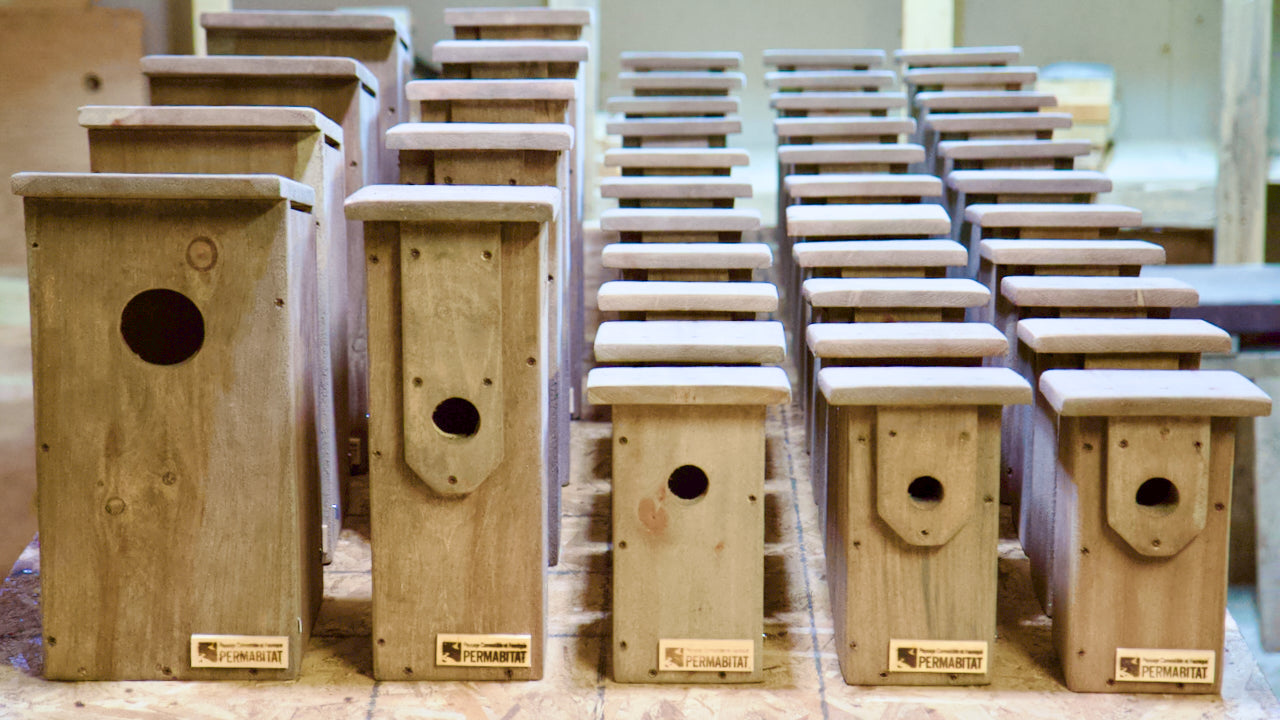
ENGAGEZ-VOUS POUR LA CONSERVATION AVEC DES NICHOIRS FABRIQUÉS ARTISANALEMENT
En investissant dans des nichoirs de qualité auprès d’une entreprise spécialisées, vous soutenez des artisans passionnés dédiés à la conservation et à la durabilité de nos environnements naturels. En choisissant ces nichoirs, vous devenez un acteur actif dans la préservation des écosystèmes fragiles. Ainsi, chaque nichoir que vous installez est un pas de plus vers un monde où les écosystèmes sont respectés et protégés, et où chaque être vivant a la possibilité de prospérer.
Les réponses aux questions les plus courantes pour vous aider rapidement et efficacement.
Questions fréquentes (FAQ)
Les passereaux sont-ils tous des oiseaux chanteurs?
Tous les passereaux ne sont pas nécessairement des oiseaux chanteurs, mais la majorité d'entre eux le sont. Certains, comme les corvidés (par exemple, les corbeaux et les corneilles), utilisent des vocalisations plus complexes mais ne sont pas toujours considérés comme des "chanteurs" au sens mélodique du terme.
Comment puis-je aider à protéger les passereaux?
Vous pouvez aider à protéger les passereaux en plantant des arbres et des arbustes indigènes car ils fournissent de la nourriture, en installant des nichoirs comme abris et sites de nidification, et en évitant l'utilisation de pesticides.
Comment attirer un oiseau spécifique dans mon jardin?
Commencez par planter des fleurs, plantes et arbres indigènes afin de leur fournir de la nourriture ainsi qu'un habitat accueillant. Assurez-vous également de fournir une source d'eau propre pour boire et se baigner. Enfin, installez un nichoir adapté à l'espèce pour lui offrir un endroit sûr où nicher.
Quel est l'oiseau chanteur le plus facile à faire nicher dans son jardin?
Les mésanges sont souvent considérées comme les plus faciles à attirer et à faire nicher dans un jardin. Elles sont très adaptables et apprécient les mangeoires et les nichoirs. Les mésanges à tête noire, en particulier, sont proches des humains et cohabitent bien avec d'autres oiseaux.
Pourquoi est-il toujours un bon moment pour installer un nichoir?
Installer un nichoir est toujours une excellente initiative, quelle que soit la période de l'année, pour de nombreuses raisons.
- Hébergement toute l'année : Les nichoirs offrent un refuge sûr non seulement pendant la saison de reproduction, mais aussi en hiver lorsque les oiseaux cherchent des endroits pour se protéger du froid et des intempéries.
- Préparation à la saison de nidification: En installant un nichoir avant la saison de reproduction, vous permettez aux oiseaux de s'habituer à sa présence et vous augmentez les chances qu'ils le repèrent et le considèrent comme un lieu de nidification au printemps.
- Encourager la biodiversité : Les nichoirs aident à maintenir et à augmenter la population d'oiseaux en offrant des sites de nidification.
- Observation et éducation : Installer un nichoir permet d'observer les comportements des oiseaux et d'apprendre davantage sur leur mode de vie, ce qui est enrichissant et éducatif pour toute la famille.
En résumé, en offrant un habitat adapté toute l'année, vous contribuez à la conservation des oiseaux et à la biodiversité de votre région.
Combien de temps prend-il pour que mon nichoir soit utilisé?
La durée nécessaire pour que les oiseaux commencent à utiliser un nichoir peut varier en fonction de plusieurs facteurs :
- Emplacement : Si le nichoir est placé dans un endroit approprié et sûr, il a plus de chances d'être utilisé rapidement.
- Espèce ciblée : Certaines espèces, comme les mésanges, peuvent adopter un nichoir en quelques heures, tandis que d'autres peuvent être plus sélectives quant à leurs sites de nidification. Assurez-vous que le nichoir est adapté à l'espèce que vous souhaitez attirer.
- Présence d'autres sources d'attraction: Si votre jardin offre de la nourriture, de l'eau, et de la végétation adéquate, les oiseaux seront plus enclins à y rester et à utiliser le nichoir.
En général, il peut falloir de quelques heures à plusieurs semaines pour que des oiseaux commencent à utiliser un nichoir. Pour augmenter les chances d'occupation, assurez-vous que le nichoir est placé dans un endroit calme et sécurisé, à l'abri des prédateurs, et qu'il est adapté aux espèces d'oiseaux locales.
Pourquoi mon nichoir ne fonctionne-t-il pas?
Il peut y avoir plusieurs raisons pour lesquelles votre nichoir n'est pas utilisé par les oiseaux :
- Emplacement inadapté : Assurez-vous que le nichoir est placé dans un endroit sûr et abrité, loin des prédateurs Il doit être à une hauteur appropriée au-dessus du sol et à l'écart des vents dominants.
- Nichoir de mauvaise qualité ou mal conçu :Le nichoir doit être adapté à l'espèce d'oiseau que vous souhaitez attirer. Vérifiez la taille de l'entrée et l'espace intérieur.
- Manque de nourriture et d'eau à proximité : Un jardin attractif avec une bonne couverture végétale, des sources de nourriture et d'eau encourage les oiseaux à rester et à explorer les nichoirs disponibles.
- Prédateurs : Évitez d'avoir des branches trop près de l'entrée du nichoir, car ces prédateurs pourraient s'y percher et attendre la sortie des oiseaux pour les capturer.
- Nettoyage : Assurez-vous que le nichoir est propre et exempt de parasites ou de débris qui pourraient dissuader les oiseaux.
En prenant en compte ces facteurs, vous pouvez augmenter les chances que votre nichoir soit utilisé par les oiseaux de votre jardin.
Que faire si mon nichoir ne fonctionne pas?
Si votre nichoir ne semble pas attirer les oiseaux, voici quelques conseils pour améliorer la situation :
- Vérifiez l'emplacement : Assurez-vous que le nichoir est dans un endroit calme, sûr et à l'abri des prédateurs.
- Ajustez la taille et la conception : Le nichoir doit être adapté à l'espèce d'oiseau que vous souhaitez attirer. Vérifiez la taille de l'entrée et l'espace intérieur.
- Aménagez l'Environnement : Créez un habitat attrayant en fournissant des sources de nourriture et d'eau proches du nichoir.
- Surveillez les prédateurs : Si des prédateurs peuvent accéder au nichoir, pensez à installer des dispositifs de protection.
- Entretenez le nichoir : Nettoyez régulièrement le nichoir pour éviter les parasites et les débris.
En suivant ces conseils, vous pouvez augmenter les chances que votre nichoir soit utilisé par les oiseaux de votre jardin.







